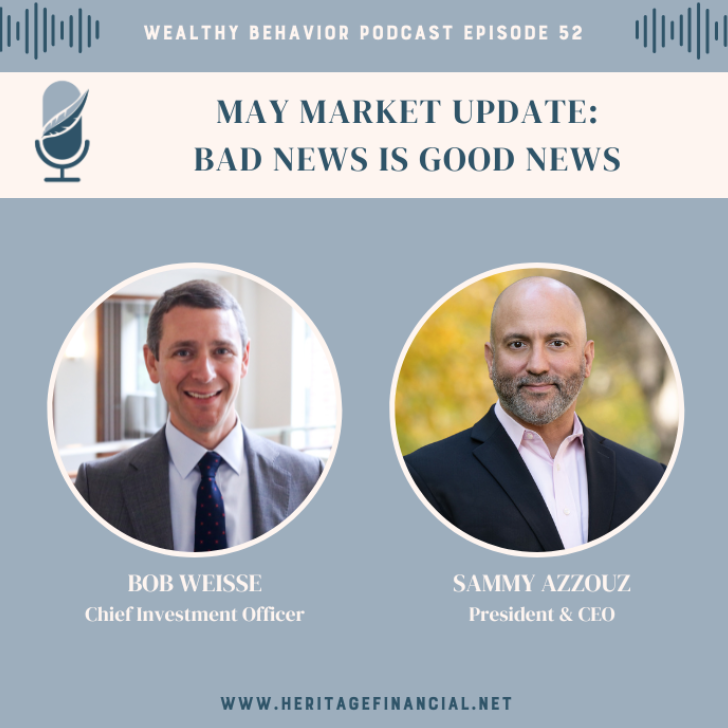Dollar Cost Averaging and the Weak Jobs Report
In the May investment edition of the Wealthy Behavior podcast, I spoke to our Chief Investment Officer, Bob Weisse, about:
- The weak jobs report and why unemployment ticking up helped stocks and bonds
- How the Fed’s dual mandate (employment and inflation) are coming into conflict and why rate cuts might be around the corner
- Whether the Fed will be reluctant to cut rates close to the election
- Why dollar cost averaging doesn’t work mathematically and is often requested at the wrong time, but can still be the right approach for investors
Full episode available here and wherever you get your podcasts.

The April jobs report shows that the U.S. unemployment rate rose and wage gains slowed more than expected. Markets reacted favorably to this news. Why be happy that more people are out of work and earning less? These are two signals that the strong labor market may be starting to soften. The markets are hoping that a labor market slowdown will nudge the Fed closer to begin lowering interest rates.
Heritage Financial’s CIO, Bob Weisse, and CEO, Sammy Azzouz, also discuss how the Feds comments can move markets, the impacts the housing market and upcoming election may have on the Feds moves, and answer a client question– If you have the choice, should you invest a lump sum all at once or wade into the market by dollar cost averaging?
We’d love to hear from you! Email us questions, ideas, or feedback at wealthybehavior@heritagefinancial.net.
